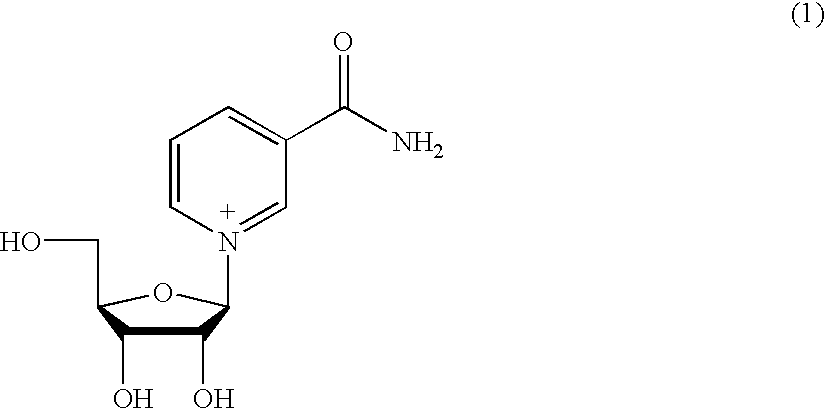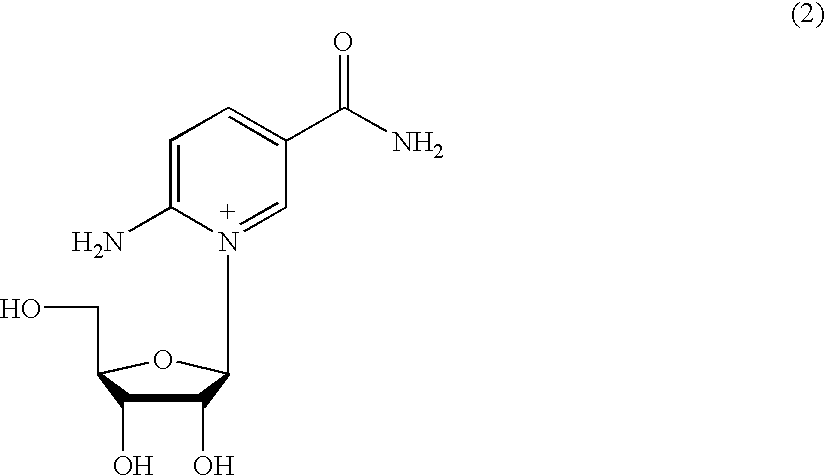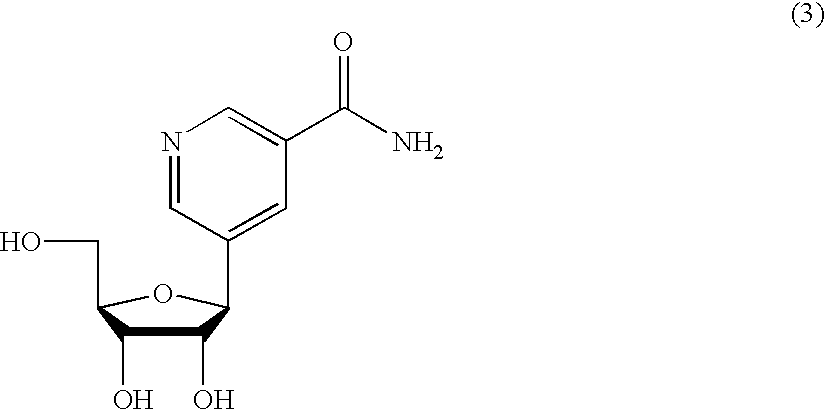Inhibiting GS-FDH to modulate NO bioactivity
a bioactivity and nitric oxide technology, applied in the field of nitric oxide bioactivity modulation, can solve the problems of ineffective metabolizing alternate nitrosothiols and nadh-dependent metabolizing activity, and achieve the effect of increasing nitric oxide bioactivity and no bioactivity
- Summary
- Abstract
- Description
- Claims
- Application Information
AI Technical Summary
Benefits of technology
Problems solved by technology
Method used
Image
Examples
first embodiment
[0064] We turn now to the embodiment directed to a method of treating a patient afflicted with a disorder ameliorated by NO donor therapy where the method comprises administering to the patient a therapeutically effective amount of an inhibitor of glutathione-dependent formaldehyde dehydrogenase. This embodiment may be referred to as the first embodiment herein.
[0065] The disorders applicable to this embodiment include, for example, breathing disorders (e.g., asthma, cystic fibrosis, and ARDS), heart disease, hypertension, ischemic coronary syndromes, atherosclerosis, glaucoma, diseases characterized by angiogenesis (e.g., coronary artery disease), disorders where there is risk of thrombosis occurring, disorders where there is risk of restenosis occurring, chronic inflammatory diseases (e.g., AID dementia and psoriasis), diseases where there is risk of apoptosis occurring (e.g., heart failure, atherosclerosis, degenerative neurologic disorders, arthritis and liver injury (ischemic o...
second embodiment
[0073] We turn now to the embodiment directed to a method of treating a patient afflicted with pathologically proliferating cells where the method comprises administering to said patient a therapeutically effective amount of an inhibitor of glutathione-dependent formaldehyde dehydrogenase. This embodiment may be referred to as the second embodiment herein.
[0074] We turn now to the case of the second embodiment herein where the pathologically proliferating cells are pathologically proliferating microbes.
[0075] The microbes involved are those where glutathione-dependent formaldehyde dehydrogenase is expressed to protect the microbe from nitrosative stress or where host cell infected with said microbe expresses said enzyme thereby protecting the microbe from nitrosative stress.
[0076] The term "pathologically proliferating microbes" is used herein to mean pathologic microorganisms including but not limited to pathologic bacteria, pathologic viruses, pathologic Chlamydia, pathologic prot...
third embodiment
[0092] We turn now to the embodiment directed to a method of treating a patient in need of increased nitric oxide bioactivity, said method comprising administering to said patient a therapeutically effective amount of glutathione-dependent formaldehyde dehydrogenase. This embodiment may be referred to as the third embodiment herein.
[0093] In one subset, i.e., the first subset, of the third embodiment, the patient has a disorder associated with a deficiency in nitric oxide. The term "disorder associated with a deficiency in nitric oxide" is used herein mean disorder where NO deficiency is a feature and the deficiency constitutes less NO than the norm or less than the normal NO bioactive response. Disorders associated with a deficiency in nitric oxide include atherosclerosis, restenosis, and disorders involving deficiency in NO in tissues where NO is necessary to keep the tissues alive, e.g., deficiency in NO in endothelial cells, hepatocytes and certain lung sites, including liver di...
PUM
| Property | Measurement | Unit |
|---|---|---|
| Disorder | aaaaa | aaaaa |
Abstract
Description
Claims
Application Information
 Login to View More
Login to View More - R&D
- Intellectual Property
- Life Sciences
- Materials
- Tech Scout
- Unparalleled Data Quality
- Higher Quality Content
- 60% Fewer Hallucinations
Browse by: Latest US Patents, China's latest patents, Technical Efficacy Thesaurus, Application Domain, Technology Topic, Popular Technical Reports.
© 2025 PatSnap. All rights reserved.Legal|Privacy policy|Modern Slavery Act Transparency Statement|Sitemap|About US| Contact US: help@patsnap.com



